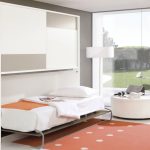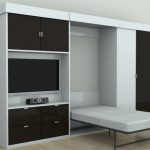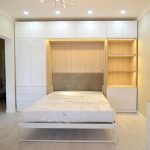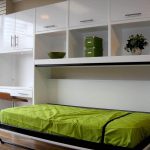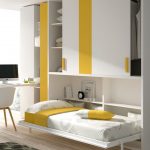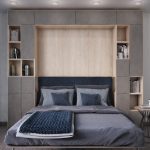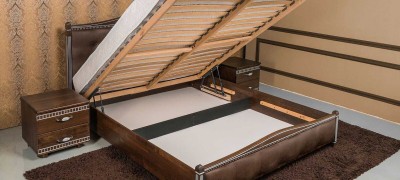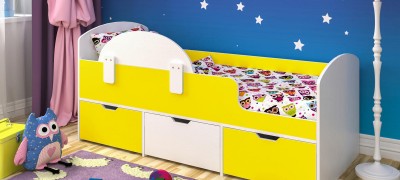Step-by-step instructions for making a wardrobe bed with your own hands
Residents of modern megalopolises are more likely than others to face the issue of competent ergonomics of their living space. On the one hand, you want a comfortable rest, but on the other hand, it is not always possible to place furniture that is used only for sleeping in a limited space. Recently, transforming furniture has become more and more popular.
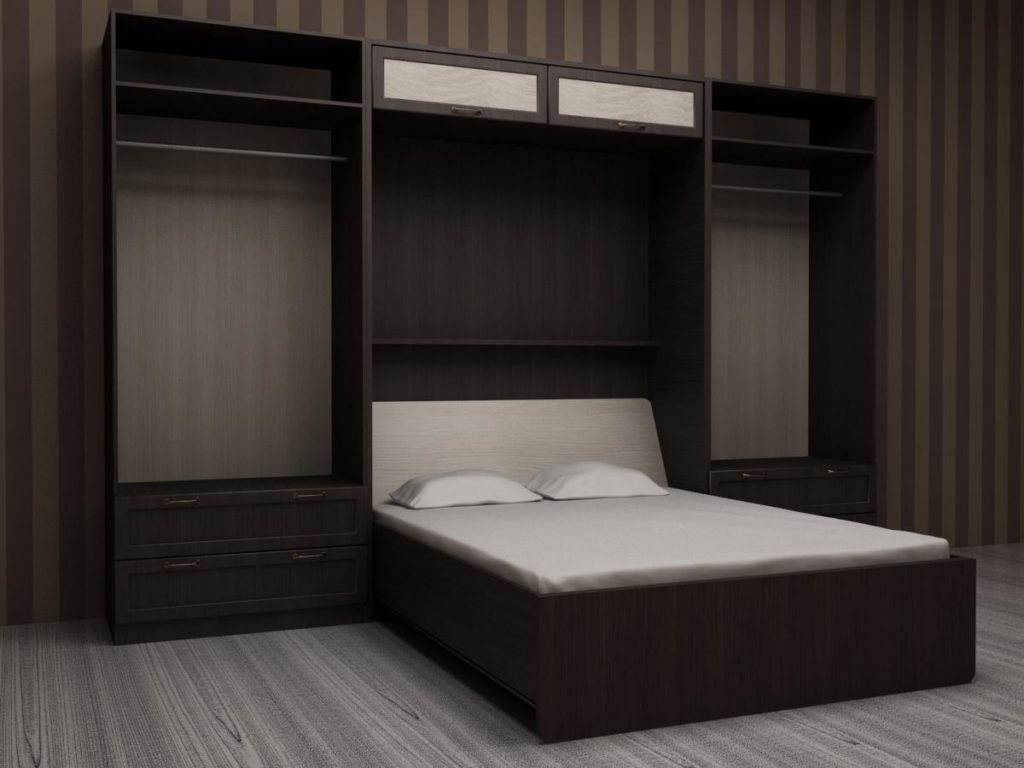
The wardrobe bed in the list of such interior items takes the first place. You can make such a transformer yourself. This material will fill in all the gaps in the question of how to make a transformer bed and do-it-yourself drawings for it.

- Definition with the model and design of the wardrobe bed
- Choice of materials
- Which transformation mechanism is better
- Instrument preparation
- Drawing up drawings and sketches
- A step-by-step description of the process of making a wardrobe bed with your own hands
- Installation and decoration of the product
- Examples of location in the interior
- Video: Ergobed Basic wardrobe bed mechanism
- Wardrobes-beds in the interior in the photo
Definition with the model and design of the wardrobe bed
The most important advantage in making a transforming bed yourself is the ability to choose any of the proposed designs, and even create your own.

First of all, you need to build on the existing style in the room. It is unlikely that it will be possible to combine a modern design wardrobe bed if other furniture is made, for example, in a classic style. The main thing is to observe the harmony of the living space and not to allow mixing of radically different styles.

It is better if, already at the planning stage, an approximate sketch of the future bed is drawn up. And the best option is to find any of the ones you like on the Internet and adapt it to your needs as much as possible. In this case, you can also save a decent amount of personal time, which can be spent when creating designs and drawings yourself.

Choice of materials
Creating a good convertible bed starts with choosing the right materials. The main thing is to imagine what the frame of the cabinet and the bed itself will be made of. Today, the most commonly used materials are:
- Wood.
- Plywood.
- Chipboard (chipboard).

The easiest way to work with chipboard is a plate of compressed sawdust covered with a finishing layer of paint. Wood and plywood require special treatment, as they basically contain natural wood, which must be protected from moisture and other aggressive media, such as acids, cold and heat. For such protection, materials are often used, few of which are suitable for indoor use.
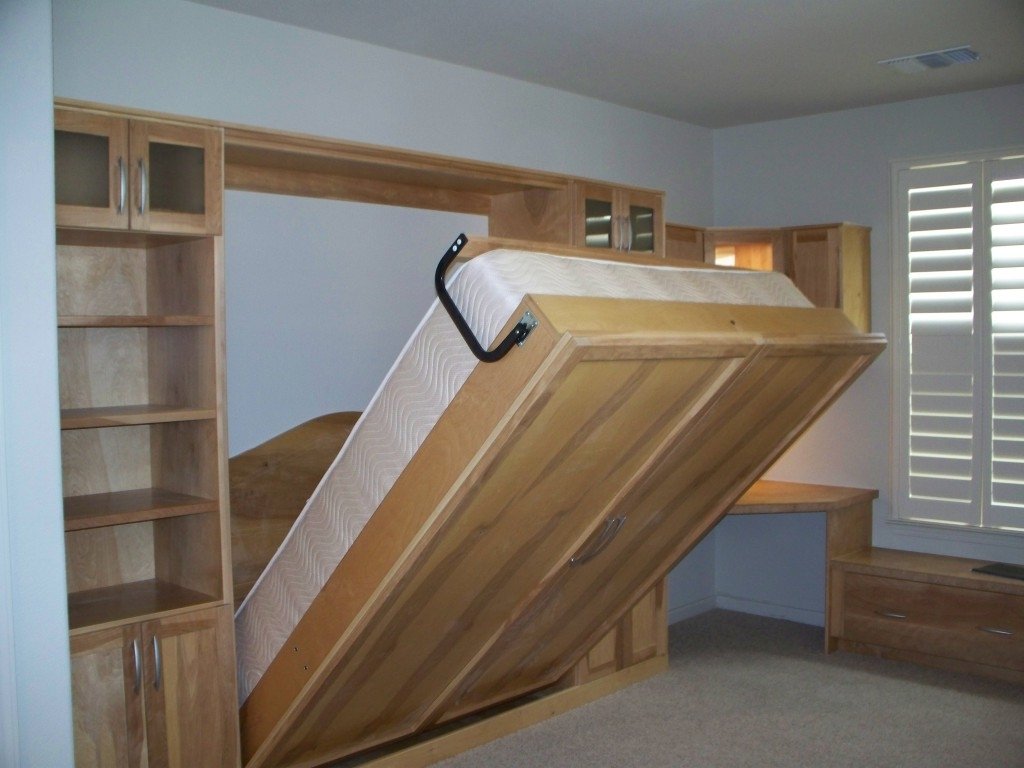
Important! The main thing is, when choosing a protective impregnation for a wooden or plywood base, to make sure that the composition used is safe for humans.
Having cut out the selected material, we proceed to its finishing. Plywood, wood or chipboard must be painted to the required appearance. Chipboard will help to avoid such works, since the choice of various colors is simply huge.

In addition to the actual cabinet and bed frame, you must have materials for:
- legs of the bed;
- decorating elements;
- bed lowering mechanism;
- fasteners (bolts, corners);
- loop parts.
In its simplest form, the wardrobe bed can be interconnected by gas lifts and metal legs to hold the frame in a horizontal position.

More functional solutions require the use of additional materials, which include decorative, fastening and hinge elements.
Which transformation mechanism is better
When choosing a transformation mechanism, first of all, you should proceed from the intensity of the use of your bed. For turning a sofa into a bed, the following may be responsible:
- springs;
- shock absorbers (closers);
- bearings, mechanical elements.

The spring mechanism is characterized by the problem of stretching with frequent use, and the metallic ringing of working springs is not the most pleasant.
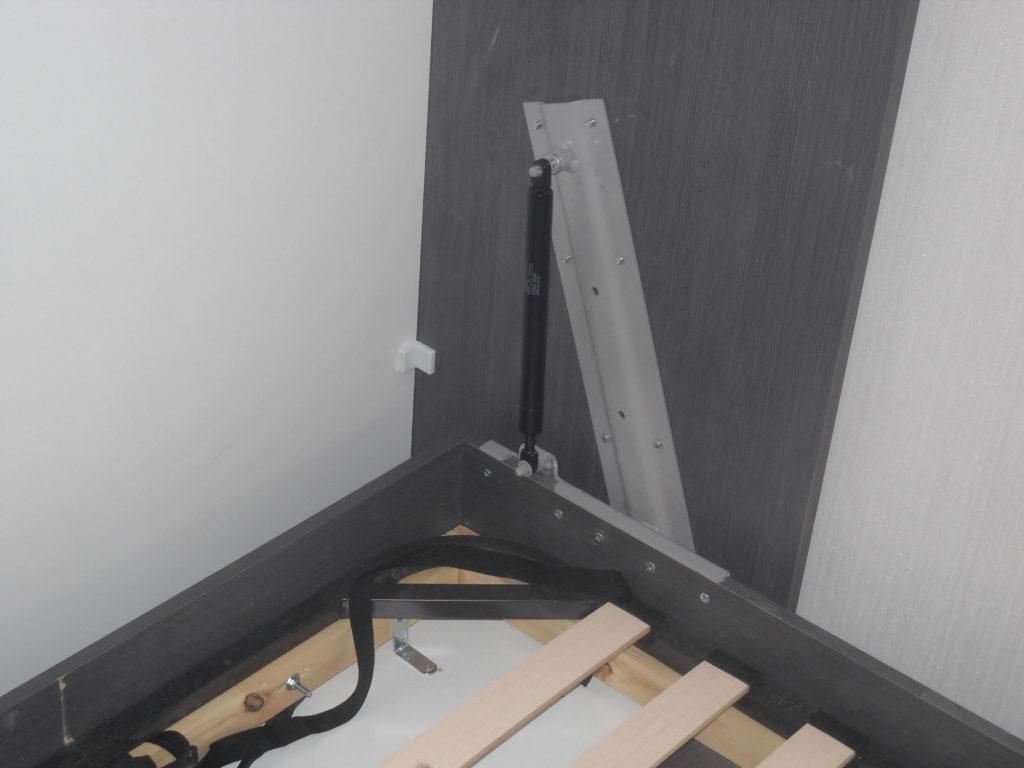
Gas shock absorbers (also called gas lifts, less often - closers) do an excellent job, but they can also fail, therefore, when using them, it is recommended to provide for the possibility of unimpeded replacement.

Bearings are used less often than any other options due to the specificity of the design transformation. This is due to the fact that the bearing is not responsible for the smoothness of unfolding, that is, each time you have to manually raise the entire mechanism on your own.

Instrument preparation
Before starting work, you should have the following tools on hand:
- construction tape;
- pencil;
- ruler;
- jigsaw or circular saw;
- pliers;
- fasteners - bolts and euro screws;
- sandpaper;
- building level;
- screwdriver.
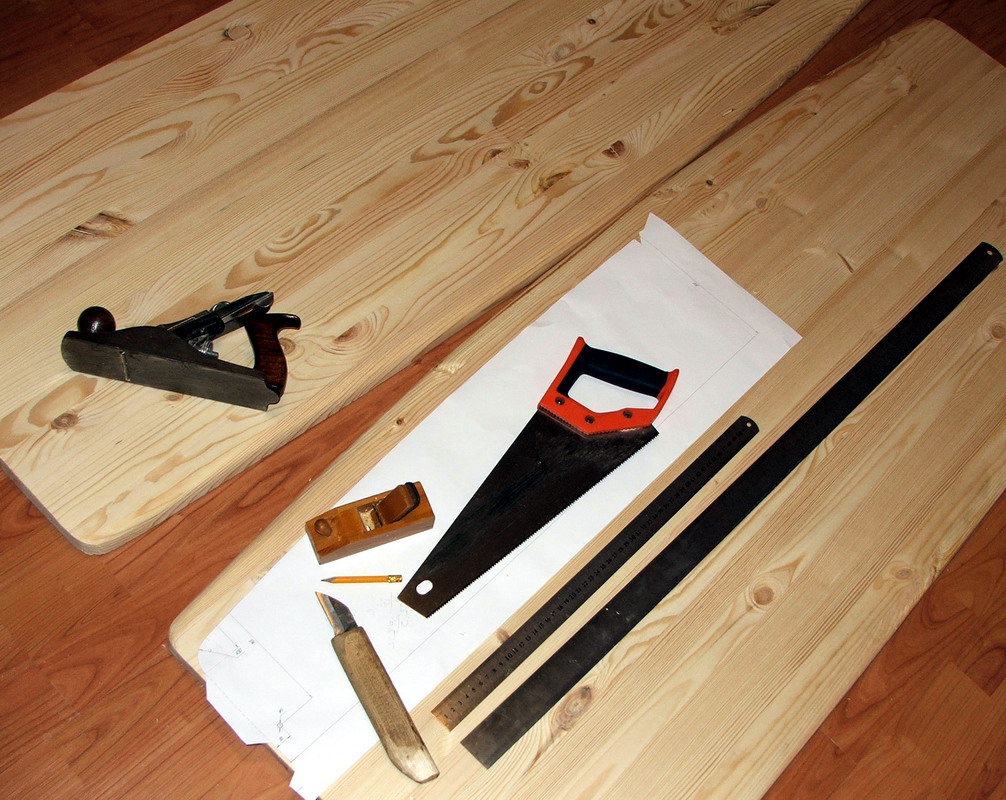
It is recommended to use euro screws as the most reliable type of fastener with a screwdriver of the appropriate type.
Drawing up drawings and sketches
When the issue with materials and tools is resolved, it's time to move on to drawing up drawings.
An accurate drawing plan is created based on previously prepared sketches. Each element in the drawing must have clear dimensions and type of attachment to adjacent components.

In general terms, the drawing should include:
- sofa frame: 4 partitions - two horizontal and the same number of vertical;
- bed base;
- the type of legs used;
- method of fixing and unfolding the bed.

The outer facade of the bed, when converted into a wardrobe, is often decorated with additional shelves. Of course, nothing major can be placed in such storage places, but with additional fixation, you can even design a folding tabletop.

This will allow you to organize an ergonomic workplace after folding the bed. Drawings will help to make such a transformer bed with your own hands.

If you plan to assemble a double transformer bed wardrobe with your own hands, the drawings can be mirrored for each of the individual parts.
A step-by-step description of the process of making a wardrobe bed with your own hands
Stages of making a wardrobe bed:
- Choosing a future design and drawing up a rough sketch.
- Calculation of the amount of required materials and their purchase.
- Creation of the final drawing.
- Cutting out the material, organizing the attachment points of individual parts to each other.
- Assembling the wardrobe bed and checking its performance.
- Cosmetic work on decorating the resulting interior item.
It is important to follow the sequence of the steps. This will allow you to always have the necessary materials and fasteners on hand.

The most crucial stage is cutting. Even experienced craftsmen prefer to carry it out in specialized factories. After all, no matter how simple and reliable a hand-held household tool may seem, not a single jigsaw is able to provide a consistently high quality of cutting, once in the process of work a hand trembled - and the entire sheet of material can be disposed of.

You need to have even more skill when working on organizing the landing sites of fasteners. If they are of poor quality, you can completely lose the ability to collect the entire structure.

Installation and decoration of the product
When all the component parts are cut, the cutting points are sanded, and the mounting places for the fasteners are marked, it is time for collection. You can assemble a wardrobe bed in just a few hours, if all the previous points are done with high quality.
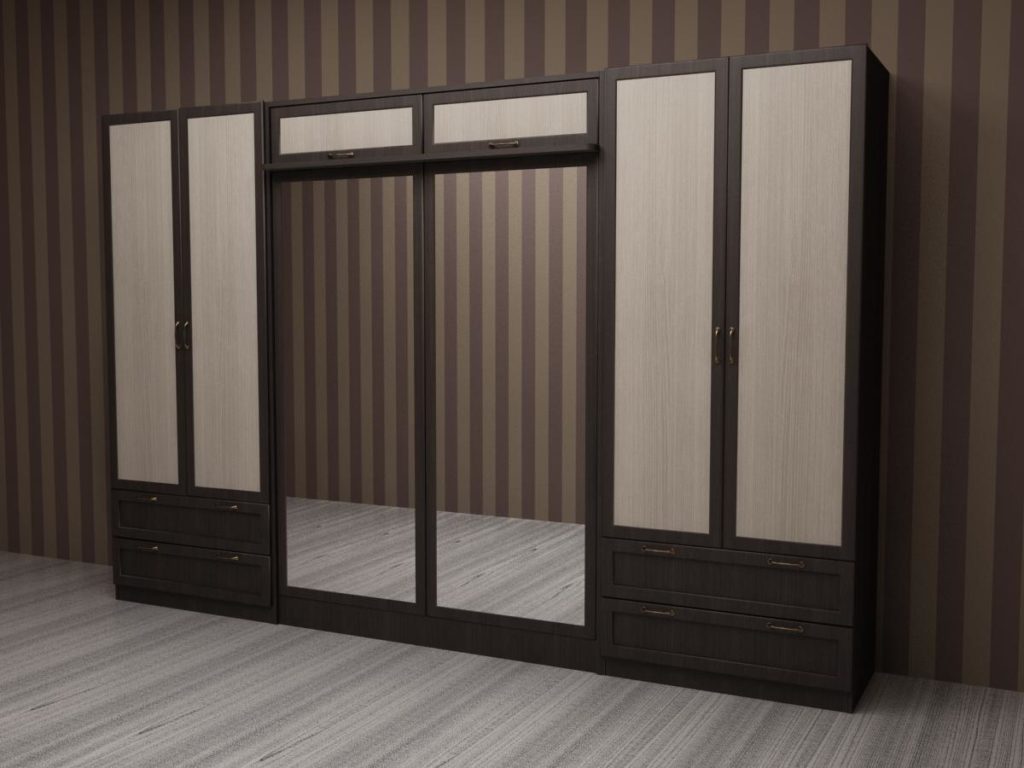
Important! The type of fastener used depends on the material used. When working with wood and plywood, self-tapping screws are used; for chipboard and chipboard, furniture screws are used.
First of all, we assemble and attach the cabinet frame to the wall and floor. Then we move on to assembling the bed. We attach the elements of the bed frame to each other, then we fix the bottom. And only after making sure that these parts are securely fastened, you can proceed to the installation of additional shelves or other selected elements.

The last step is to install and attach to both parts of the transformation mechanism. It is important that the fasteners do not cling to the furniture frame when folding. We check the lifting mechanism several times for correct operation and proceed to the installation of the facade elements.

Code and this stage is passed, again we lay out our bed and install a mattress in its frame. It should be remembered to keep the mattress in place in a horizontal position - with the bed folded. Most often, ordinary furniture belts are used for this, fastened to each other with plastic locks.
Note! The ability to quickly remove the mattress will help both for preventive cleaning of the bed and the mattress itself.

Examples of location in the interior
Having burst into the design of living rooms and homes, wardrobes are helping to find more and more applications.
Note! In any design of such a furniture transformer, it is important to take into account just the moment of unfolding.
It is unacceptable to store loose, liquid and any poorly fixed things in a folded state.
The assembled transforming bed can be used as:
- Desktop;
- wardrobe;
- clothes hanger.
In the version with a work table, its table top can be folded. In this simple way, you can make a work surface of an impressive size.

Wardrobes-beds are most often decorated with front doors.Firstly, it is necessary to provide such doors with reliable fastening in a horizontal position. Magnetic locks work best for this. Inside the cabinet, you can provide a shelf, hanger or double (combined) design. The type of interior space should be planned in the initial stages.

In the execution of the hanger, the front of the bed is made monolithic, and the crossbar for their location often plays the role of a metal leg when unfolding. That is, it is important to take into account that this emphasis can withstand not only the weight of the entire structure, but also the people located on it.

It is worth approaching the issue of planning and self-assembly of the wardrobe-bed thoroughly, and the result will be an excellent way to rationally organize living space, even for a small area.
Video: Ergobed Basic wardrobe bed mechanism











